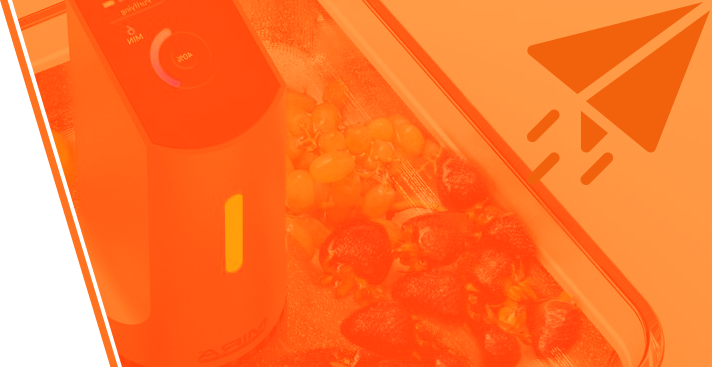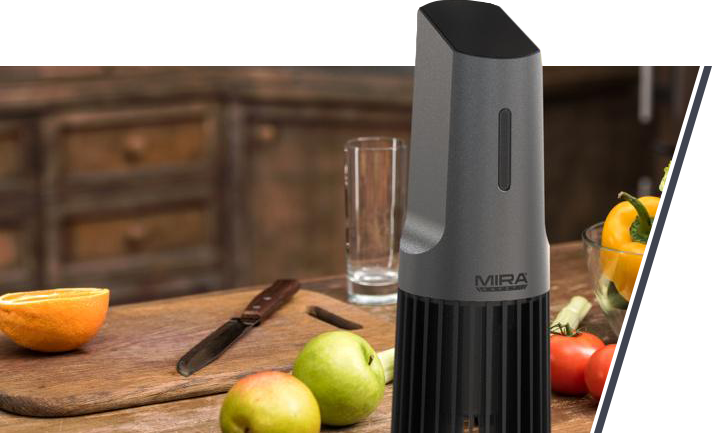What is the number one cause of foodborne illness in the United States? Is it salmonella, shigella, or botulism? If you answered Clostridium perfringens, you are correct.
While few people have heard of this particular bacterium, many have felt the consequences of having it throw a party inside their gut.
So what can we do to prevent catching this bug? What are the signs and symptoms of an infection? And what are the ways that it spreads? Let’s take a closer look.
Table of Contents
-
01
What is Clostridium perfringens
-
02
Clostridium perfringens Symptoms
-
03
Clostridium perfringens and Sudden Infant Death Syndrome
-
04
What Food is Clostridium perfringens In?
-
05
How to Prevent Clostridium perfringens
-
06
Frequently Asked Questions
What is Clostridium perfringens?
Clostridium perfringens is one of the most interesting bacteria in the world. Why? Because it can do things that are on the superhero level in the microscopic world.
For starters, this bacteria is everywhere and is considered the most pervasive pathogenic bacteria on the planet. It’s in soil, water, poop, animals, and humans as well. Because of this, it’s impossible to get away from it. Trying to eradicate C. perfringens from the earth would be like trying to eliminate all worms from the planet. It’s just not going to happen.

Being a spore-forming bacteria, it’s also challenging to kill. When it comes into contact with environmental conditions that cause it to fear for its life, C. perfringens, in essence, builds a little fort around itself, keeping it ready for later germination in much the same way as an acorn does. There’s a tough outer shell that holds life inside of it for a later date. And when it comes to that later date, we’re also talking about the potential of years of viability after being a spore.
And lastly, to add to the list of superpowers, Clostridium perfringens is also one of the fastest replicating bacteria known to humankind. Within as few as eight minutes, this bacterium can begin to duplicate, soon taking over a food dish to the point that it can make somebody sick. When you combine all that together, you quickly end up with one of the most tricky little germs on the planet.
But what about it makes it a concern to humankind? How does it impact us? Let’s tackle that next.
Clostridium perfringens Symptoms
If you eat a considerable amount of Clostridium perfringens, within 10-12 hours, you will likely experience your first signs and symptoms.
For most, this will be watery diarrhea that lasts a day or less. This comes about from a Type A strain infection, which is generally mild and is the most common Clostridium perfringens infection in the industrial world.

(Image source:Image courtesy of Oregon State University at Wikimedia Commons.)
However, there’s a second type of strain – Type C – that also exists out there. While it’s typically relegated to the developing world, if you end up with this type of strain partying in your belly, you’re in for some severe problems.
This is because Type C Clostridium perfringens is known for causing necrotic enteritis. In other words, parts of your intestines will suddenly start to die. And it only takes 5-6 hours after being infected for this to begin to take place. Unless appropriate medical care is sought as quickly as possible, the case fatality rate with a Type C infection falls somewhere between 15-25%.

(Image source: If C. perfringens finds its way into a laceration, a case of gas gangrene can result. Image courtesy of Shcropfer, Rauthe, and Meyer at Wikimedia Commons.)
SPECIAL ELEMENT – A NOTE OF INTEREST
Clostridium perfringens is a particular problem in Papua New Guinea. After large outbreaks were first reported there in 1966, killing children in particular, it was found that recent holiday feasts were the culprit. People consumed large amounts of contaminated pork there, giving Clostridium perfringens access to human intestines.
Unfortunately, sweet potatoes are also a large part of the diet of those in Papua New Guinea. Because the people also ate a lot of these during the feasts, the problem compounded.Sweet potatoes contain a particular enzyme that acts as an inhibitor within the body to the destruction of the toxin that Type C Clostridium perfringens produces. So not only was the toxin produced in the body, but the people had inadvertently made it so that their bodies couldn’t fight it.
A lot of children have died in Papua New Guinea as a result. There, this disease is referred to as “pigbel.”
Clostridium perfringens and Sudden Infant Death Syndrome
This author believes that this is, in fact, the actual health risk of Clostridium perfringens in the United States. While adults may only end up with a mild case of watery diarrhea, the outcome for an infant could be much more severe.
To start, we need to remember that regardless of whether we’re studying human beings, plants, or animals, the infants of each of these living things are the most defenseless. This is not only the case when it comes to predator threats but also when fighting disease and illness.
What an adult human being can easily ride out could cause a baby to become incredibly ill. And in the case of Clostridium perfringens, there is a lot of evidence that it may be directly tied in with sudden infant death syndrome (SIDS).
While SIDS is often idiopathic (meaning, it happens, and we don’t know why), consider the following:
-

Upon completing autopsies of SIDS babies, we routinely find that they have significantly higher amounts of Clostridium perfringens in their intestines than healthy babies. One study found that 81% of SIDS babies had bacteria in their intestines, compared to only 20% of healthy babies’ bellies.
-

Second, consider that it is not uncommon for the parents of SIDS babies to report that their child had signs and symptoms of a gastrointestinal illness in the days preceding the death.
-

Studies have shown SIDS babies often have more Clostridium perfringens in their gut and more of its enterotoxin in their stool than breastfed babies.
-

Damage to the intestinal wall is found in 84%of SIDS babies.
-

Fewer neurons are found in specific brain regions of SIDS babies, and signs of inflammation are present. This is thought to be one reason SIDS babies don’t move away from suffocative forces within a crib. Their brains aren’t working to tell them to move.
-

Gastrointestinal health is inherently linked to brain health. Researchers call this the gut-brain axis.
-

Gut inflammation has been linked to anxiety, depression, and memory loss. (Pause on this one. Where is memory? In the neurons of the brain. Can memory loss be caused by the loss of neurons in the brain? Absolutely.)
-

SIDS babies show evidence of prior inflammation.
-

A disrupted microbiome in the gut could potentially lead to Alzheimer’s and dementia.
-

Ninety percent of the neurotransmitter serotonin – the hormone that helps to regulate emotions – is manufactured within the gut.
So we can see an inherent link between what happens in the gut and what can happen in the brain.
Considering all of this together, one can make the case very strongly that Clostridium perfringens is one of the prime causes of SIDS.
What Food is Clostridium perfringens Found In
For the most part, C. perfringens likes to stick around in meat products. In fact, one epidemiological study of 1998-2008 found that 63% of the C. perfringens cases found were attributed to meat dishes. Forty-nine percent of these meat cases were caused by eating contaminated beef, while 32% were attributed to poultry dishes.

Gravy has also been found to be a common cause of infection, but why is this the case? Why do these three foods regularly cause the bulk of these infections?
The answer can be traced back to Clostridium perfringens rabbit-like ability to proliferate incredibly fast. The thing about meat dishes is that it’s not uncommon for people to leave them out to cool for a significant time until they are refrigerated.
This proves to be the perfect place for Clostridium perfringens to thrive. As that pot of stew sits on the counter to cool before it’s cooled again in the refrigerator, C. perfringens can multiply. Then, when the dish is pulled back out of the fridge, people can get sick.
SPECIAL ELEMENT – A NOTE OF INTEREST
C. perfringens outbreaks are typically tied to commercial establishments with no refrigeration capacity to deal with large numbers of customers. Catering firms, restaurants, and schools are some of the most common sources of these outbreaks.
How to Prevent Clostridium perfringens
Don’t let meat dishes cool before refrigeration.
If you’ve cooked too much food for your family to eat for dinner that night and have a bit of leftovers to stow away in the fridge or freezer, make sure you do so as quickly as possible. The longer you let that casserole sit out on the kitchen counter, the greater your chances of ending up with a stew full of bacteria.

So put that food into the fridge as quickly as possible after serving from the pot.
Breastfeed Your Baby
If the opportunity presents itself, it is safer to breastfeed your baby than to feed them formula. While the formula-making process is incredibly stringent and subjected to a very high level of quality controls, it is very easy for bottles to end up dirty. As mentioned above, breastfed babies tend to have lower levels of C. perfringens in their bellies.

Image courtesy of National Institute of Korean Language at Wikimedia Commons.
This doesn’t by any stretch of the imagination mean that if you formula feed your baby, they will get sick. If that were the case, we would see sick babies left and right after formula feeding, and we don’t see that at all.
The point here is that there are a lot of benefits to breastfeeding a baby rather than feeding with formula, and less risk of C. perfringens infection is one of them.
Serve meat dishes hot.
The sooner you can eat your food, the less time you give bacteria a chance to replicate. Remember that it only takes eight minutes for C. perfringens to begin to multiply and that once those bacteria have babies, it only takes eight more minutes before the babies can have babies. You quickly end up with an exponential growth curve this way.

Serving meat dishes while they are still hot is the best way to ensure that you keep your food safe to eat.
Use the MIRA Safety Detoxifier
Clostridium perfringens doesn’t like oxygen as it is. Typically, when exposed to oxygen, it forms a spore to protect itself better. This is why it can last in the soil for years.

However, as much as it dislikes oxygen, it hates ozone, for this is the cavalry charge bearing down on an enemy armored with Styrofoam. Numerous studies show that ozone destroys Clostridium perfringens and can be used as a safe means of assisting in rendering food safe.
This has been proven so extensively that in 2001, the FDA approved the use of ozone as an antimicrobial agent in foods. No residue is left behind, as with chemical agents, and ozone breaks down into nothing other than oxygen.
And this is precisely what the MIRA Safety Detoxifier uses to help to decontaminate foods. Just something to chew on…

Final Thoughts
While perhaps not as scary of a bacterium as something like Shigella, Clostridium perfringens still can hold its own when it comes to causing illness on a national scale. However, some easy steps you can take will better help keep you and your family safe. One of these steps is to add the MIRA Safety Detoxifier to your kitchen. Not only will it help to protect you against Clostridium perfringens, but against several other threats as well.
So give it a try. We think you’ll be happy with the results.
What are your thoughts? Let us know in the comment section below.





